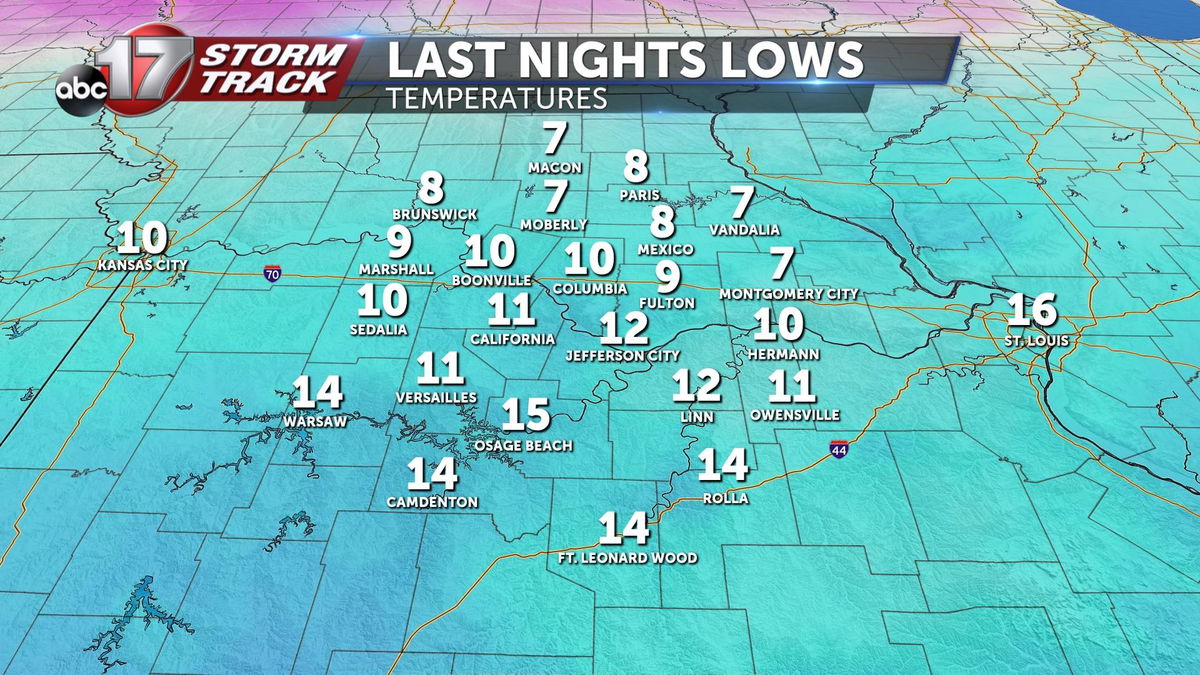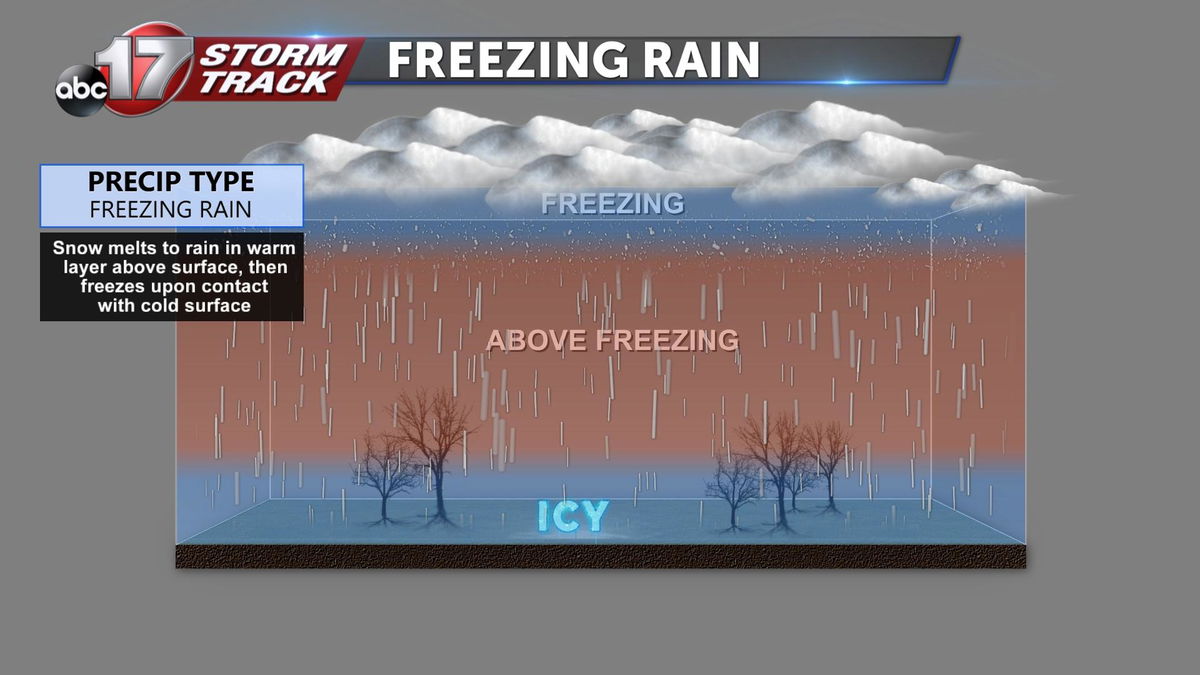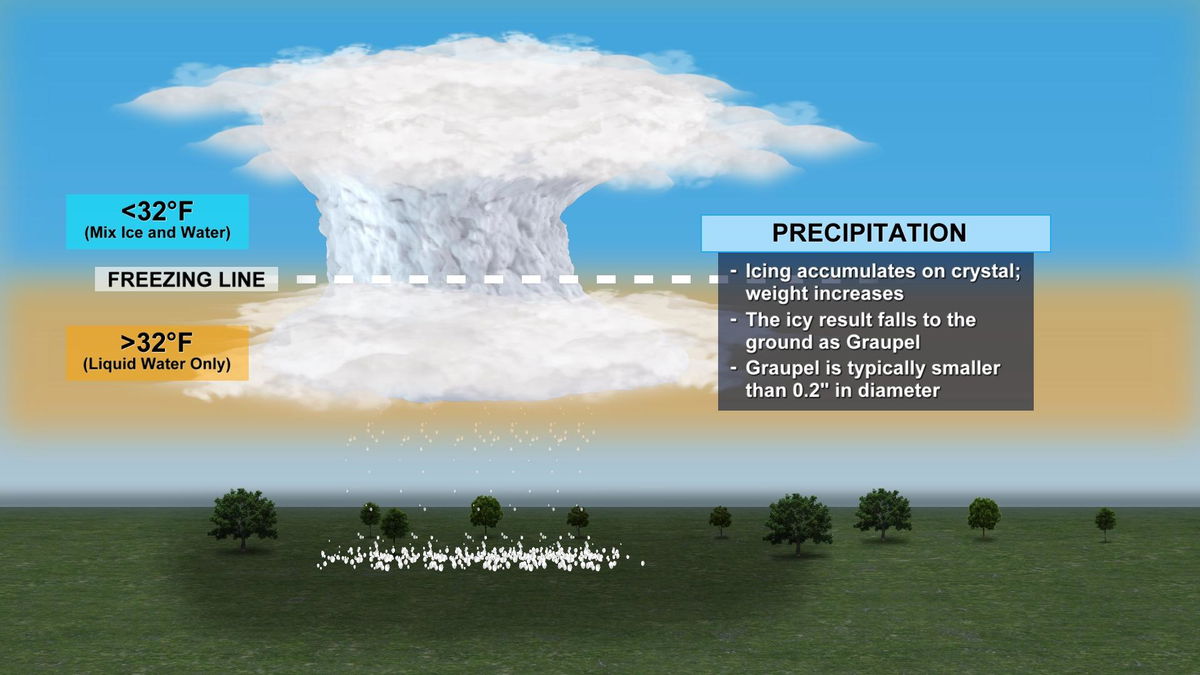How below freezing temperatures can lead to different forms of precipitation
Just this past week portions of Mid-Missouri has seen a range in forms of winter precipitation. From graupel, freezing rain, to light snow. During all of these events, surface temperatures fell at different points when compared to the freezing mark. Last week when Dip N' Dots-like white balls of frozen precipitation fell known as graupel, surface temperatures ranged from the 33-36 degree mark.

On Monday the 29th, portions of southeastern Mid-Missouri saw a freezing drizzle despite some surface temperatures reaching towards the single digits by the end of the night. How is it possible that frozen forms of precipitation happened at way different temperatures. To find the answer, much more than the surface temperatures must be looked into.

When dealing with the atmosphere precipitation typically falls from incredible heights and reaches its destination if the earths surface at the end of its journey. To understand the journey and processes of this precipitation temperatures must be explored at each height in the earth's atmosphere. When it comes to freezing rain, the process starts out as a frozen precipitation known as snow. The snowflake then melts as it gets closer to the earths surface as it goes into a layer of the earths atmosphere that is above the freezing mark. This layer is typically known as a warm nose by meteorologist due to its appearance on graphs know as Skew-T's. The now melted snowflake will then pass through a final layer that is below freezing right before it reaches the earths physical surface causing the liquids temperature to remain below or at the freezing mark of water. This moisture is in liquid form at this time until it reaches a surface where its motion is then discontinued and the sub-freezing moisture can harden into ice.

Graupel forms in a different process from that of freezing rain/ drizzle. The atmosphere is more split into two separate portions during the formation process of graupel. First, water droplets in the layer that remains above freezing is pushed back upward into the layer of the clouds and atmosphere that is below 32 degrees. The water droplets then reach a temperature under freezing while remaining a liquid in a process called supercooling. Ice crystals will collect onto the supercooled water droplet and eventually after enough building through a process called rimming, the weight of a single graupel pigment then falls back down to the earth's surface. Typically graupel resembles hail in looks but remains under 0.2 of an inch. Graupel will also fall apart easily with pressure when picked up.
